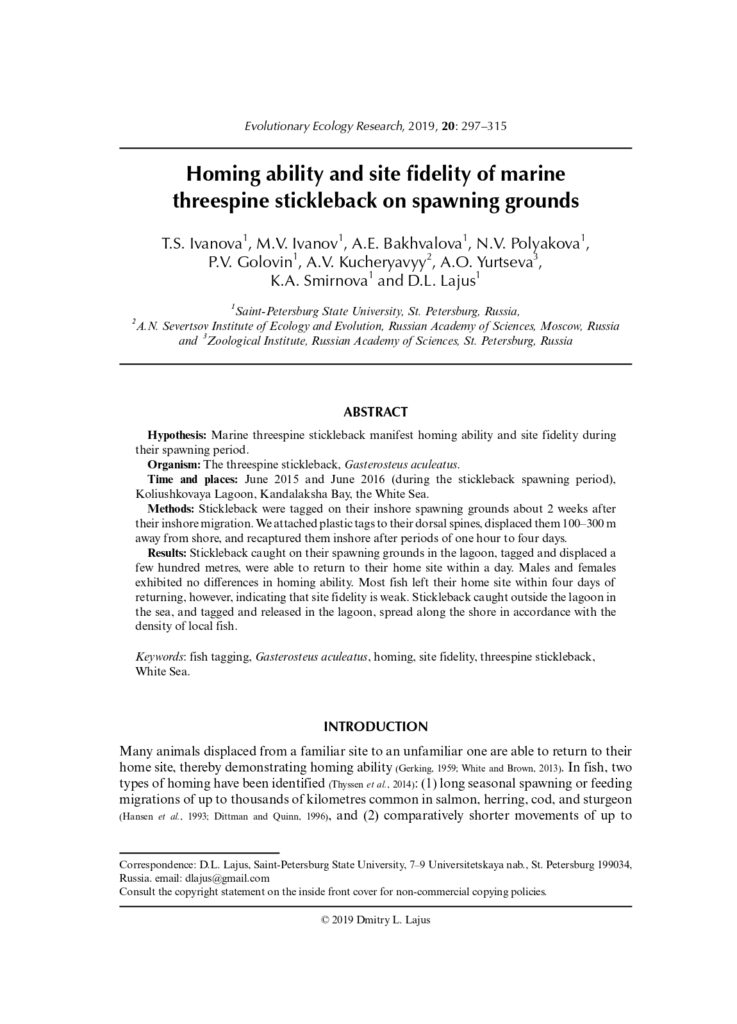Homing ability and site fidelity of marine threespine stickleback on spawning grounds
Ivanova, T. S., Ivanov, M. V., Bakhvalova, A. E., Polyakova, N. V., Golovin, P. V., Kucheryavyy, A. V., Yurtseva, A. O., Smirnova, K. A., Lajus, D. L.
Evolutionary ecology research (2019)
Ivanova, T. S., Ivanov, M. V., Bakhvalova, A. E., Polyakova, N. V., Golovin, P. V., Kucheryavyy, A. V., Yurtseva, A. O., Smirnova, K. A., Lajus, D. L. 2019. Homing ability and site fidelity of marine threespine stickleback on spawning grounds. Evolutionary Ecology Research, 20(1–3), 297–315.
Link to publication in the journal
Absract
The ability of the marine threespine stickleback to homing and its attachment to the place during spawning were studied. The study was conducted in Koliushkovaya lagoon (Kandalaksha Bay, White Sea) in June 2015 and 2016. Stickleback were tagged on their inshore spawning grounds about 2 weeks after their inshore migration. We attached plastic tags to their dorsal spines, displaced them 100–300 m away from shore, and recaptured them inshore after periods of one hour to four days. Stickleback caught on their spawning grounds in the lagoon, tagged and displaced a few hundred metres, were able to return to their home site within a day. Males and females exhibited no differences in homing ability. Most fish left their home site within four days of returning, however, indicating that site fidelity is weak. Stickleback caught outside the lagoon in the sea, and tagged and released in the lagoon, spread along the shore in accordance with the density of local fish.
Keywords: fish tagging, Gasterosteus aculeatus, homing, site fidelity, threespine stickleback,
White Sea.


 8 (812) 321-32-79
8 (812) 321-32-79
About the author